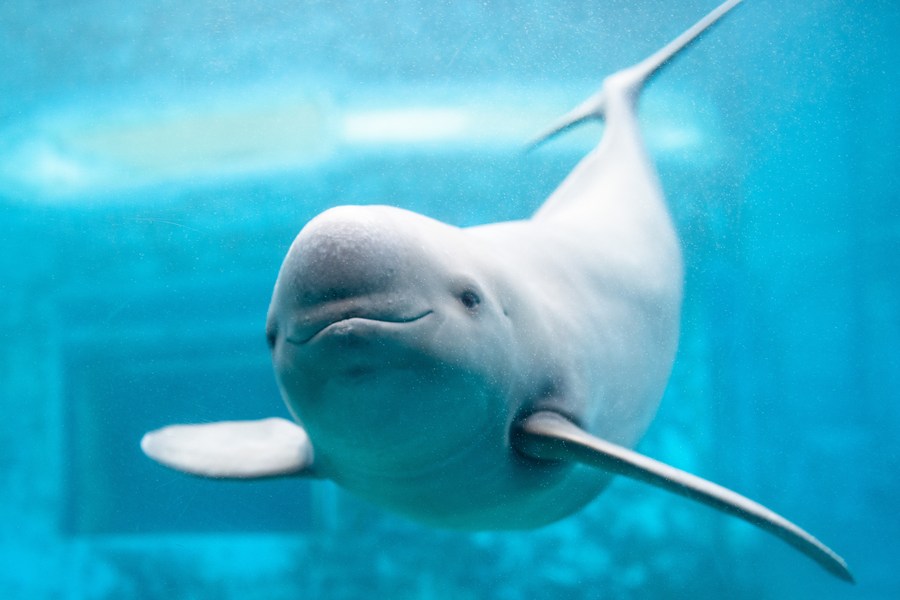
A Yangtze finless porpoise swims at the Baiji Dolphin House under the Institute of Hydrobiology, the Chinese Academy of Sciences (CAS) in Wuhan, central China's Hubei Province, on July 5, 2023. (Xinhua/Xiao Yijiu)
BEIJING, Nov. 11 (Xinhua) -- Chinese scientists have revealed the adaptive mechanism of the Yangtze finless porpoise to temperature changes by observing the thickness of its blubber, the thick layer of fat under the skin.
The study, conducted by scientists from the Institute of Hydrobiology under the Chinese Academy of Sciences, was recently published in the journal Water Biology and Security.
By monitoring four Yangtze finless porpoises using ultrasound imaging technology, the scientists investigated the variation patterns of blubber thickness (BT) and their relationship to environmental temperature changes.
They found that blubber was not evenly distributed in the skin of the animals. Moreover, different body regions display different sensitivities to seasonal temperature changes.
The BT in the anal girth region exhibited noticeable seasonal changes. In contrast, the umbilical lateral and ventral regions showed relatively blunt seasonal changes, indicating different adaptive functions of the blubber in different regions, according to the study.
It has also revealed that the food intake of the Yangtze finless porpoises has a negative correlation with water temperature, which implies that there might be a mechanism of environmental temperature regulating BT by changing the appetite or food intake of the animals.
"This study elucidates the seasonal pattern of BT variation in small cetaceans and provides insight into adaptation mechanisms of small cetaceans to temperature changes," the study stated.
Yangtze finless porpoise is one of the smallest cetacean species worldwide, which exclusively inhabits the middle and lower regions of the Yangtze River in China. ■











